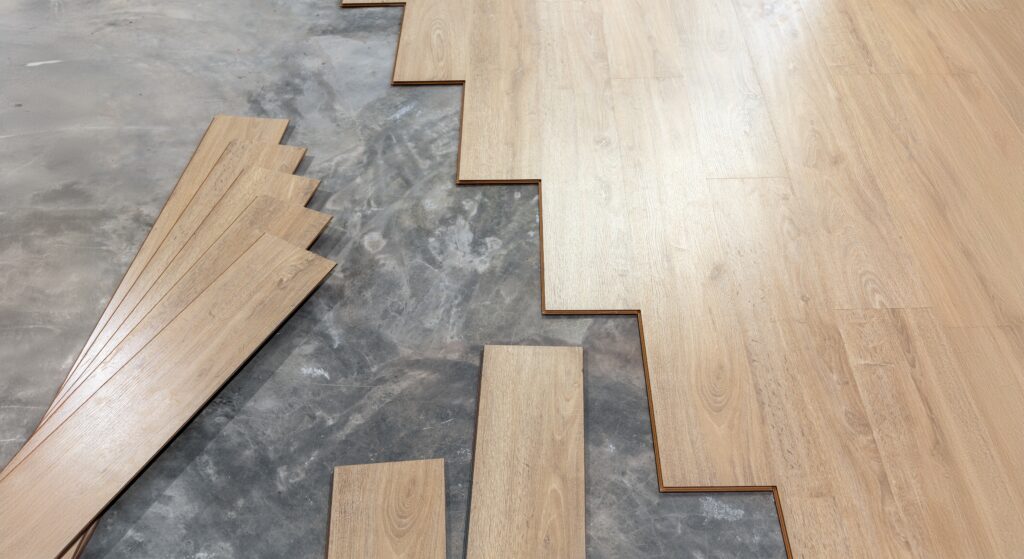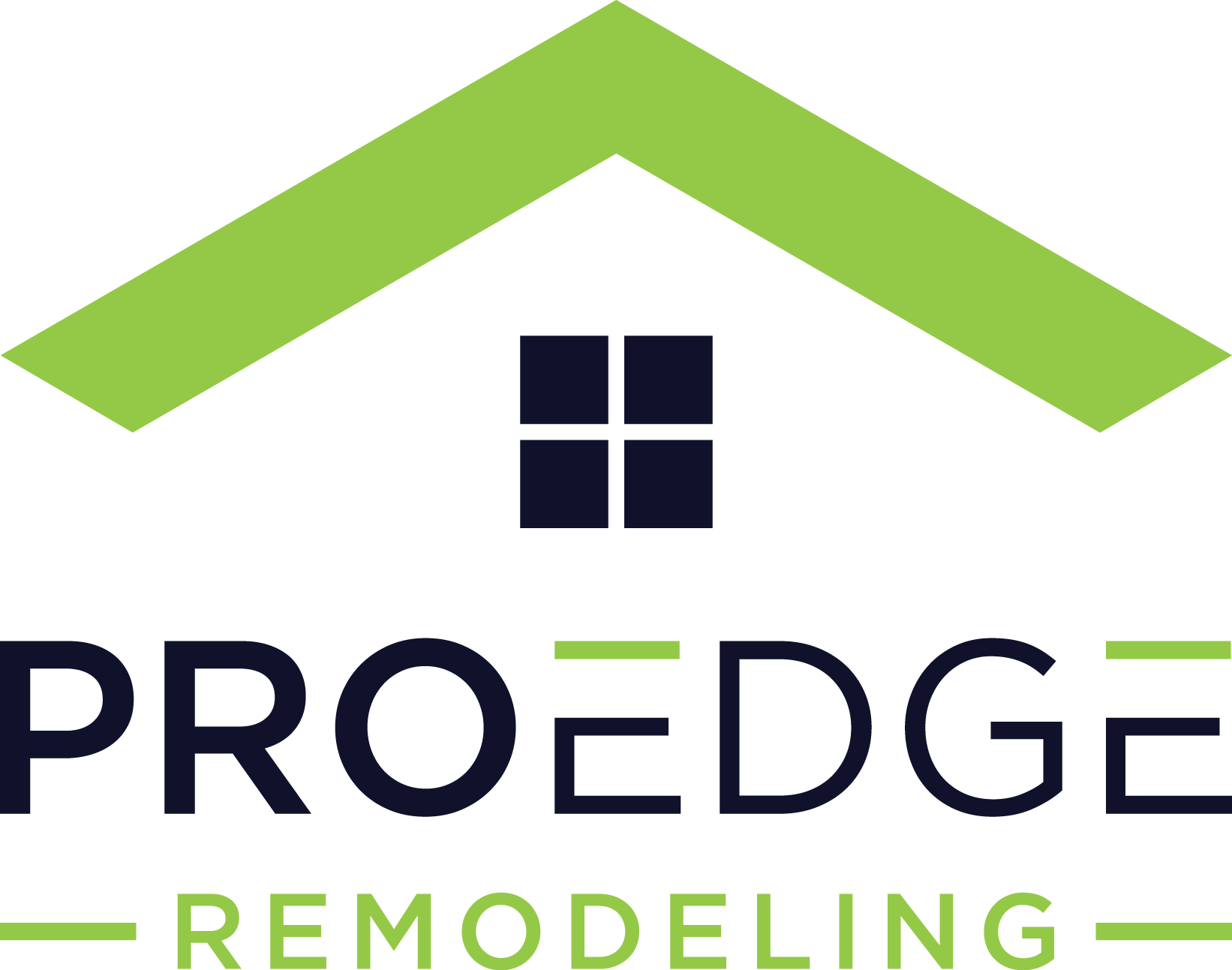Laminate Flooring Cost Guide

If you’ve been living with dated carpet or scratched-up hardwood, replacing your floors may feel long overdue. But high quotes and the sheer number of options can make it hard to know where to start, especially if you’re trying to keep your project on budget.
Laminate flooring can be a smart, affordable solution. It’s come a long way from the shiny, plastic-looking planks of the past. Today’s laminate looks surprisingly realistic and holds up well in busy homes, making it a top pick for homeowners who want style without the steep price tag.
In this guide, we’ll break down everything you need to know about laminate flooring costs in 2025—from per-square-foot estimates to hidden expenses that can catch you off guard. Whether you’re updating a single room or tackling a whole-house makeover, this planner will help you build a realistic budget and feel confident in your choices.
Table of Contents
- Why Laminate Flooring Is So Popular Right Now
- How Much Does Laminate Flooring Cost in 2025?
- How Laminate Stacks Up Against Other Flooring Options
- What Affects the Cost of Laminate Flooring?
- Laminate Flooring Installation: What You’re Paying For
- DIY vs. Professional Installation
- Tips to Save on Laminate Flooring
- How Long Does Laminate Flooring Last?
Why Laminate Flooring Is So Popular Right Now
Laminate flooring has earned its reputation as a go-to material for modern home upgrades. It mimics the look of hardwood, stone, or tile at a much lower cost, and it’s built to withstand daily wear and tear—perfect for families with kids, pets, or just a lot of foot traffic.
Durability is a big part of its appeal. Laminate resists scratches, stains, and fading. It’s also easier to clean than many other options. And thanks to improvements in design and manufacturing, laminate floors are now available in a wide range of textures, finishes, and colors that can match almost any home style.
Installation is another strong point. Many products feature click-together systems that make DIY projects more approachable. Even if you hire a pro, laminate installs quickly and doesn’t usually require major prep work.
How Much Does Laminate Flooring Cost in 2025?
You can expect to pay anywhere from $3 to $10 per square foot installed, depending on the product quality, installation complexity, and your location.
Here’s a closer look at typical price ranges:
- Materials only: Entry-level laminate starts around $1–$2 per square foot. Mid-range products run $2–$4, and premium styles with waterproof cores or built-in underlayment go up to $6 or more.
- Installation included: With labor, total installed costs usually fall between $3 and $10 per square foot. Simpler projects stay at the lower end, while complex layouts or high-end materials push costs higher.
For example, flooring a 200-square-foot room could cost between $600 and $2,000, depending on the choices you make. A full-house project might range from $4,500 to $15,000 or more—but that’s still far less than the cost of hardwood.
How Laminate Stacks Up Against Other Flooring Options
Laminate often delivers better value than other flooring types:
Flooring Type | Installed Cost (per sq. ft.) | Key Benefit |
Carpet | $3–$8 | Soft, affordable, but stains easily |
Vinyl Plank | $2–$10 | Waterproof, great for kitchens and baths |
Hardwood | $8–$25+ | Classic and long-lasting, but costly |
Laminate | $3–$10 | Affordable, stylish, low maintenance |
What Affects the Cost of Laminate Flooring?
Several factors can influence how much you’ll pay for laminate flooring. Understanding these variables helps you plan your budget and avoid surprises during installation.
1. Laminate Quality and Thickness
Laminate is sold in various thicknesses, typically between 6mm and 12mm. Thicker planks tend to feel sturdier underfoot and last longer, especially in high-traffic areas.
- 6–8mm: Best for light-use areas like guest bedrooms or home offices. Budget-friendly, but may feel less solid.
- 8–10mm: A good middle ground for most homes. Balances comfort, durability, and price.
- 12mm+: Offers a more premium feel, better sound absorption, and longer lifespan—ideal for busy family rooms.
Also look for the AC rating, which measures wear resistance. AC3 is suitable for residential use, while AC4 or AC5 is better for high-traffic homes or light commercial spaces.
2. Brand and Style
Well-known brands like Mohawk, Shaw, and Pergo often carry higher price tags, but they also offer better warranties and a wider selection of finishes.
The style you choose also plays a role:
- Wood-look is typically the most affordable.
- Stone or tile-look often costs more due to more complex printing techniques.
- Textured finishes (like hand-scraped or embossed) usually land on the higher end of the price scale.
3. Subfloor Condition
A smooth, level subfloor is essential for a proper laminate installation. If your existing floor has damage, squeaks, or uneven spots, repairs may be needed.
Here’s what that might cost:
- Minor leveling: $1–$3 per sq. ft.
- Major leveling or repairs: $3–$7 per sq. ft.
- Old floor removal: $1–$3 per sq. ft.
While it’s tempting to skip prep work, addressing subfloor issues upfront helps your new floors last longer and look better.
4. Room Size and Layout
The size and shape of your room can also affect the total cost. Large, open rooms are easier and faster to install, so they often come with lower labor costs per square foot.
Rooms with irregular layouts, angles, or lots of doorways take more time and may require more material waste due to extra cuts.
If your project includes stairs, expect a big bump in labor. Most pros charge $40–$60 per step, depending on the design and finish.
5. Location and Labor Rates
Where you live affects pricing too. In high-cost-of-living areas, you may pay more for labor. In smaller towns or rural regions, rates may be lower—but you might have fewer contractor options.
Laminate Flooring Installation: What You’re Paying For
Installing laminate is more than just laying down planks. Here’s a breakdown of common cost components that contribute to your final bill.
Professional Labor
Labor generally accounts for 40–60% of your total costs, or about $2 to $8 per square foot. That includes:
- Subfloor inspection and prep
- Cutting and fitting boards
- Installing underlayment (if needed)
- Trim and finish work
Most contractors offer bundled pricing, and larger projects often come with better per-foot rates.
Underlayment and Materials
Many laminate products require a separate underlayment for cushioning and sound control. Expect to pay:
- $0.50–$1.50 per sq. ft. for underlayment
- Some products include underlayment already attached, which can reduce labor but cost more upfront
Don’t forget about trims and transition strips—small items that can add up fast. These typically cost $3–$8 per linear foot.
Old Floor Removal
Removing existing flooring is often priced separately:
- Carpet: $0.70–$1.60 per sq. ft.
- Tile or glued-down flooring: $2–$7 per sq. ft.
You can handle removal yourself to save money, but be prepared for debris disposal and cleanup.
Installation Timeline
Most professional installs move quickly:
- Single room (200 sq. ft.): 1 day
- Whole home (1,500+ sq. ft.): 2–4 days
If you’re going DIY, expect to spend a few weekends on the job, especially if it’s your first time.
DIY vs. Professional Installation
Should you install laminate yourself or hire a pro? The answer depends on your budget, time, and skill level.
When DIY Makes Sense
- You’re comfortable with tools and home projects
- You’re working in simple, square rooms
- You have time to dedicate weekends or evenings to the project
Savings can be significant. DIY can reduce your total cost by 30–50%. For a 1,000-square-foot job, that’s potentially $3,000–$5,000 in labor saved.
But it’s not for everyone. Mistakes can get expensive, especially with custom cuts or subfloor issues.
When to Hire a Pro
- You’re installing in multiple rooms or complicated layouts
- You have stairs or damaged subfloors
- You want a fast, professional finish with warranty protection
Pros know how to avoid common pitfalls, and many offer workmanship guarantees. In many cases, the added cost is well worth the peace of mind.
Best of Both Worlds
Some homeowners handle prep work—like old floor removal—on their own and bring in pros for the main installation. This hybrid approach can help you stay on budget without compromising quality.
Tips to Save on Laminate Flooring
A new floor doesn’t have to blow your renovation budget. With a little planning, you can keep costs down without sacrificing quality.
Shop Sales and Closeouts
Big-box stores and flooring suppliers often run sales during major holidays and at the end of seasons. You can also find deep discounts on discontinued lines and overstock materials—just be sure to buy extra (about 10%) in case of future repairs.
Buy in Bulk
If you’re covering multiple rooms or the whole house, bulk orders often come with better per-square-foot prices. Some suppliers may throw in free delivery or discounts on accessories like underlayment and trim if your order hits a certain threshold.
Compare Contractor Quotes
Labor pricing can vary widely. Get at least three estimates from licensed, insured installers, and make sure each quote includes the same services. Ask about:
- Material and labor breakdowns
- Cleanup and debris removal
- Warranty coverage
You might also get a better rate during slower seasons or if you’re flexible with scheduling.
Go Mid-Grade on Materials
Top-tier laminate looks great, but you don’t always need it. Many mid-range options (around $2–$4 per sq. ft.) offer excellent durability and style. Look for products with an AC3 rating, waterproof core, and realistic texture—those features matter more than a premium brand name.
Do the Prep Yourself
If you’re handy, consider removing old flooring or prepping the subfloor on your own. You can also handle trim painting or furniture moving to reduce labor costs. Just confirm with your contractor that this won’t affect your warranty or installation schedule.
Install in Stages
Tight on budget? Tackle one room at a time. Start with the areas that need it most—like your entryway or living room—and finish the rest as time and budget allow.
How Long Does Laminate Flooring Last?
Laminate offers solid value over time. With proper care, most products last 15 to 25 years, and some high-end brands push past 30 years.
What Impacts Lifespan?
- Product quality: Thicker boards and better wear layers last longer
- Installation: Gaps, uneven seams, or moisture issues can shorten lifespan
- Household activity: Pets, kids, and heavy furniture can take a toll
- Climate: Consistent humidity helps prevent warping or shifting
A well-installed laminate floor in a low-traffic home may outlast carpet or even low-end hardwood.
Maintenance Made Simple
One of laminate’s biggest selling points is how little upkeep it requires:
- Sweep or vacuum weekly with a soft brush head
- Damp mop with laminate-safe cleaner (avoid soaking the floor)
- Wipe up spills quickly to prevent moisture damage
- Use pads under furniture to prevent scratches
Avoid steam mops or harsh chemicals—they can weaken the wear layer and cause warping.
When to Replace
Unlike hardwood, laminate can’t be sanded or refinished. When damage occurs, you’ll need to replace planks or the entire section. Signs it’s time to consider replacement:
- Surface wear or fading
- Buckling or lifting boards
- Water damage or swelling
- Exposed core material
That said, many homeowners replace laminate for style reasons long before it wears out.
FAQs
Is laminate cheaper than hardwood or vinyl?
Yes. Laminate typically costs $3 to $10 per sq. ft. installed, compared to $8 to $25 for hardwood. It’s on par with vinyl plank flooring, though laminate often looks more like real wood and feels more solid underfoot.
Does room type affect the cost?
The material cost stays the same, but installation can vary. Kitchens and bathrooms may need waterproof laminate, which costs more. Stairs add significant labor costs—usually $40 to $60 per step.
Is DIY installation worth it?
It can be. A confident DIYer might save $2,000 to $5,000 on a whole-house job. But if your space includes stairs, tricky angles, or subfloor issues, hiring a pro often leads to better results and fewer headaches.
Can I install laminate over existing flooring?
Often yes. Laminate can be laid over vinyl, tile, or even low-pile carpet if the surface is level and clean. Removing the old floor may be a better long-term solution, though—especially for warranty coverage or uneven spots.
How much does it cost to maintain laminate?
Very little. Expect to spend $20 to $50 per year on cleaners and furniture pads. Unlike hardwood, there’s no need for refinishing. Routine sweeping and occasional mopping are usually enough.
Will laminate add value to my home?
Laminate can offer a 78–91% return on investment when selling your home, as long as the installation looks professional and the style suits the space.
Final Takeaway: Get the Look You Want Without Overspending
Laminate flooring gives you the flexibility to upgrade your home’s look and function without blowing your budget. Whether you want the warmth of wood, the cool look of tile, or something modern and low-maintenance, laminate makes it possible.
A smart installation starts with good planning. Know your costs, compare quotes, and invest where it matters—like proper subfloor prep and quality mid-grade materials. If you’re feeling confident, DIY might save you thousands. If not, hiring a pro ensures results that last for decades.
Ready to start your project? Grab a tape measure, make a list of your must-haves, and get quotes from qualified flooring pros in your area. Your new floors could be just days away.

Anna has over six years of experience in the home services and journalism industries and serves as the Content Manager at MyHomePros.com, specializing in making complex home improvement topics like HVAC, roofing, and plumbing accessible to all. With a bachelor’s degree in journalism from Auburn University, she excels in crafting localized, comprehensive guides that cater to homeowners’ unique needs. Living on both coasts of the United States has equipped her with a distinctive perspective, fueling her passion for turning any house into a cherished home through informed, personalized decision-making.








